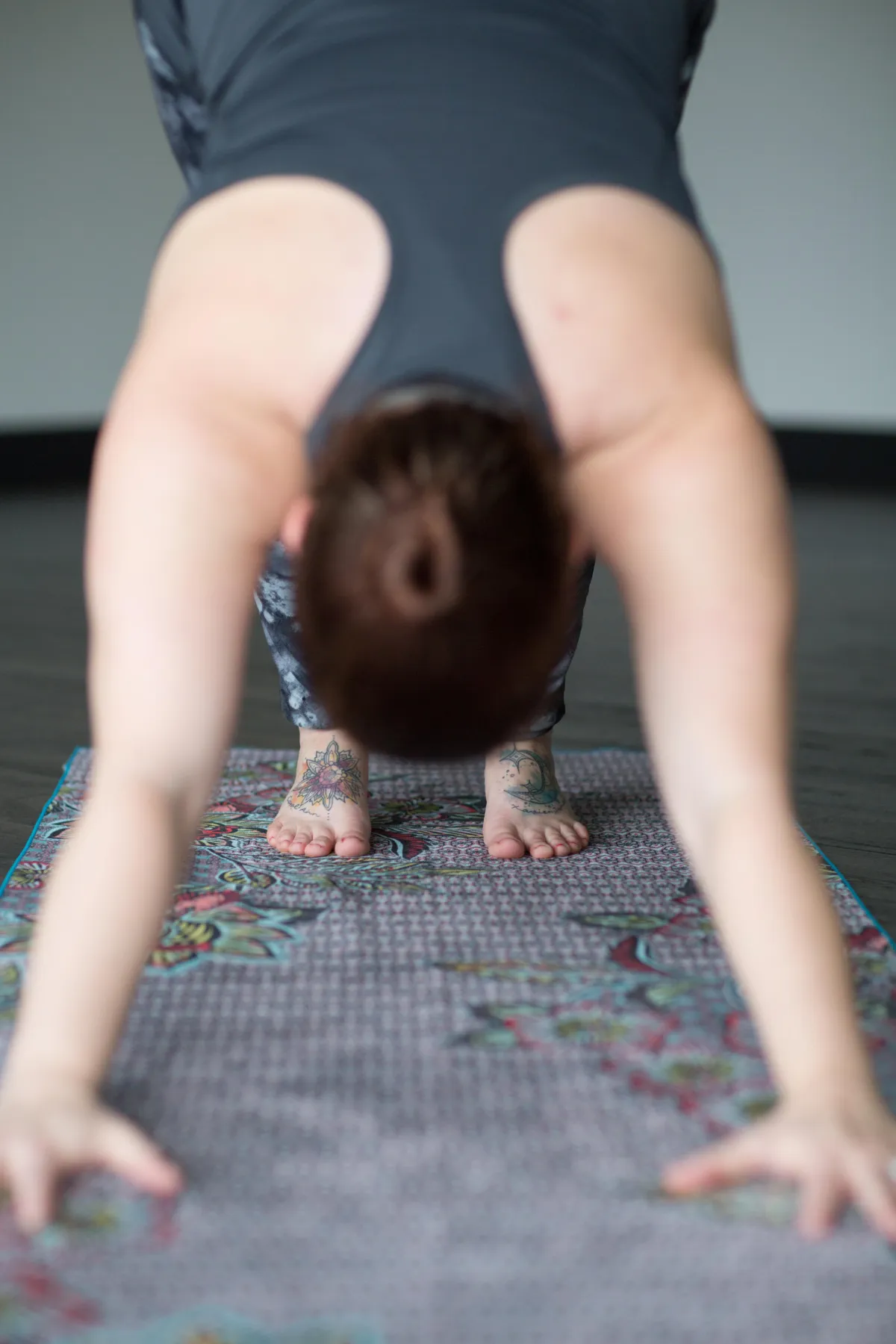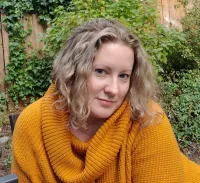Ideas for You
personalizing yoga for yourself

4 Things I Wish I'd Known When Starting Yoga
“ Go from a human being doing yoga to a human being yoga.” - Baron Baptiste
Despite most marketing efforts to simplify this sophisticated tradition in order to pique our Western interest, the yoga pool is actually much deeper than it may appear on the surface. Here are some of the things I wish I knew when I stepped into my first yoga class, which was a college PE course?!
#1. Poses are only a fraction of yoga practice.
And a small fraction at that. It is just 1/8 of the practice of yoga, in fact. And there is a fair case to make that it isn’t even the most impactful fraction of the practice!?
The ethical guidelines of the yamas and niyamas can create a peacefulness to our days even if we never touch our toes. Intentional work with the breath in pranayama techniques on a daily basis can significantly impact our physiological health, which has a cascading effect to both our physical and psychological health. Numerous studies have documented the broad effects of regular mindfulness and meditation practices, which make up three more limbs – pratyahara, dharana and dhyana – of the Eight Limbs of Yoga. And, finding ways to bring a sense of ritual that creates a more personalized, soulful facet to practicing yoga lets us experience samadhi in a way that acknowledges the spiritual side of our health and wellness.
So while the asana (poses) are perhaps the most tangible and easily marketable part of yoga in the West, most folks will get far more out of practicing yoga if they have a teacher who can skillfully weave in the other limbs. Better to have a whole practice rather than just a micro focus on 1/8 of yoga. It is so much more impactful to have a well-rounded practice that can shift its emphasis as needed depending on our physical, physiological, psychological and spiritual needs during different seasons of life. For an example of how this plays out practically in real life, you can read more about my own yoga journey experience here.
#2. Yoga is not only for the capable.
I can still practice yoga when I am injured, sick, or otherwise incapable of keeping up with the drop-in studio class pace. If there are 100 Official Yoga Poses™, then there are easily a dozen ways to do each pose, which makes for a whole lot of options. If lack of strength or flexibility makes urdhva danurasana (upward bow/full wheel pose) impossible… If bursitis in my shoulder or elbow makes chataranga (low plank) unwise… There are still easily dozens of other options or variations available so that I don’t have to let my daily practice habit falter.
(Okay, so there is no trademarked Official Yoga Poses, but sometimes we behave like there are, don’t we?! If I had $1 for every student that said in utter honesty, “you mean it’s okay for me to do chataranga with my knees on the floor?” then I’d earn my hourly rate twice over!)
" If you can breathe, you can do yoga." - T. Krishnamacharya
Similarly, if I cannot bear weight on my foot, I could either practice most poses from a chair or skip the poses and focus in on the other limbs of yoga while my foot heals. Also, if my mind seems too busy and my anxiety disorder makes meditation seem impossible… Well, I am in luck because there are so many variations and options available to practice mindfulness and meditation, too. I don’t have to write off the other limbs because I feel incapable.
In yoga, where there is a will, there is always a way.
#3. And props are not only for the incapable.
Perhaps it is more common to offer props to students to make a pose more accessible (e.g. the block to set your hands on when you cannot touch your toes in uttanasana (standing forward fold). Props can certainly make things feel easier, more attainable – in a sorta, kinda, almost touching my toes-ish kind of way. However, I’ve discovered two other things about the use of props. #1) Props can make for better alignment, which usually results in much faster strength- and flexibility-gains. And #2) Skillful incorporation of props can actually make many poses much more challenging, which usually results in plateau breakthroughs.
I’ve been in plenty of studios that don’t offer props at all, and attended several classes in which props were offered with offhanded remarks about “if you can’t do such and such…”. But my own experience noted above has lead me to become, unapologetically, probably one of the proppiest teachers around. (Yeah, “proppiest” is totally a word!)
You can read more about my favorite go-to props here.
#4. There is a difference between yoga instructor & yoga teacher.
Yoga instructors may prepare a lovely, thoughtfully constructed sequence with cues that roll off the tongue in a smooth rhythm. But a yoga teacher sees me on my mat and effortlessly adapts their planned sequence and familiar cues to meet me right where I’m at in order to take me where I can really go.
Yoga instructors can create a space that has a sense of peaceful grounding for a meditative yin practice, or a sense of deep-rooted strength and energy for a powerful vinyasa practice. But a yoga teacher holds space, allowing me to be restless and ungrounded when I show up on the mat after a long day. A yoga teacher holds space for me to be weak – muscles trembling, breath unsteady – when I show up already overworked. They trust the yoga to works its magic and bring me back into balance eventually.
Yoga instructors might offer modifications when a pose is inaccessible. But a yoga teacher adapts poses (or even entire sequences) so that over time the pose eventually becomes accessible for me.
Yoga instructors may define the Sanskrit term “vinyasa” as the flowing combination of chataranga dandasana-urdhva mukah svanasana-adho mukah svanasana (that’s low plank – updog – downdog). But a yoga teacher will define “vinyasa” as a gradual progression or a step-by-step approach that systematically and appropriately takes a student from one point and safely lands them at the next point, which makes everything about their teaching methodology into one big-picture vinyasa.
Yoga instructors might make adjustments to correct alignment in poses. But a yoga teacher will invite me to become introspective so that I can mindfully feel and learn to embody the best alignment for my body in each pose.
Yoga instructors can tell a mixed-level group of students all of the what and how to do yoga well. But a yoga teacher will introduce me to my own inner-guru so that I can confidently practice yoga even when I am away from the studio.
“Yoga serves the individual, and does so through inviting transformation rather than by giving information.” - TKV Desikachar
Being a good yoga instructor is a skill, hands down. Always make a point to attend classes of the good instructors who have really polished those skills. Being a yoga teacher is an art. If you are lucky enough to come across a good yoga teacher in your journey, hold onto them like gold.
Had I been aware of these four things when I started, I’d have saved myself plenty of wasted time. There were so many lulls and dips in my yoga practice habit just because I was struggling to get there when ‘I didn’t need those props for training wheels’, or had been fuddling my way through ‘meh’ classes with ‘meh’ instructors. It took me a minute (read: more than a decade) of trial and error (and injury) to finally realize all these points, and they have made all the difference.
And then, of course, there is also a difference between yoga teacher and yoga therapist... but that's a whole other story!
© 2025 Balanced Mind Body Therapy, LLC. All Rights Reserved. | Privacy Policy | Terms of Service
920 Alder Ave, Suite #201, Sumner, WA 98390, USA
P.O. Box 581, Sumner, WA 98390
(253) 242-9061
margo@mybalancedmindbody.com





